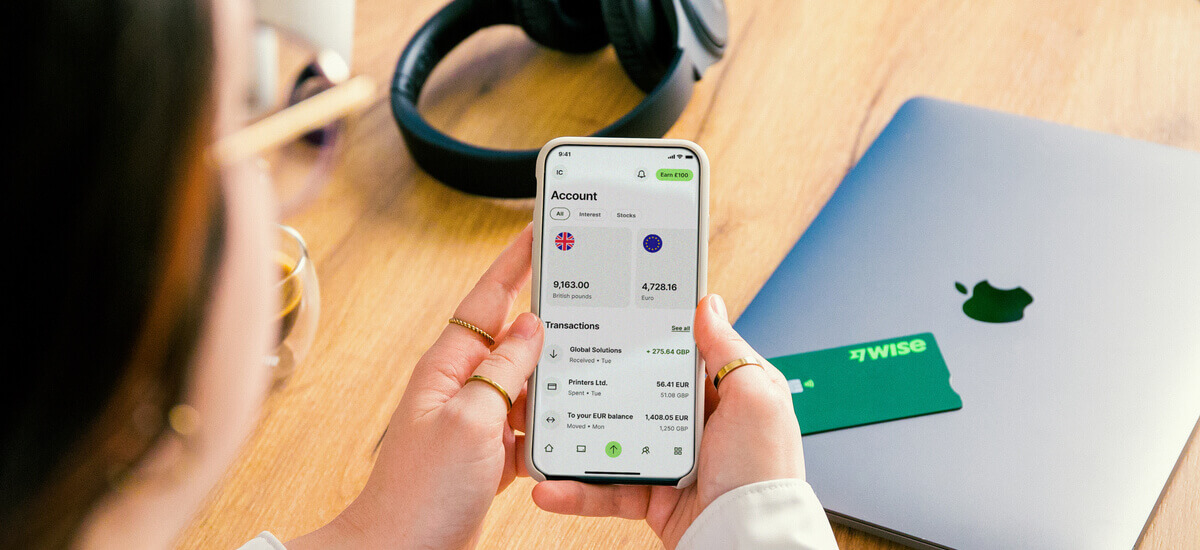Austria corporate tax - guide for international expansion
Learn about the corporate tax system in Austria, its current rates, how to pay your dues and stay compliant, and best practices.

As a Value Added Tax (VAT) registered business in the UK, you’re required to issue a VAT invoice to your customers - unless your goods or services are exempt from VAT. This establishes your VAT liability on the supply of goods and services, as well as enabling your VAT registered customers to reclaim the VAT charged to them.
But how do you create a UK VAT invoice, and what should be included? We’re here to help, with a guide to the VAT invoice requirements in the UK and tips for best practice.
And when it comes to collecting both domestic and international payments, you might want to sign up for a Wise Business account. This gives you account details for 8+ currencies, so that customers can pay you in their own currency without any additional fees.
💡 Learn more about Wise Business
A Value-Added Tax (VAT) invoice is a document issued by a VAT-registered business to its customers. It sets out the details of a taxable supply of goods or services, and includes all related information as prescribed by VAT law in the UK.
It is used in place of a standard invoice, and the main difference between the two is that a VAT invoice provides additional details of the sales taxes which apply.
Crucially, a VAT invoice only needs to be issued if both businesses - the supplier and the buyer - are VAT registered businesses.
You’ll need to register for VAT with HM Revenue and Customs (HMRC) if your company’s taxable turnover in a rolling 12-month period is more than £90,000. This is known as the VAT threshold. Businesses which are outside the UK but supply goods or services to the UK must also register for VAT.¹
Some goods and services are exempt from VAT or zero-rated. If most of what you sell falls into this category, you may not be required to register for VAT - it’s best to contact HMRC or get expert tax advice to find out more about this.
Find out more about how VAT works here.
There are a few different types of VAT invoices:²
If in doubt about which invoice type you should use, it’s always safest to go for the full VAT invoice.
To meet HMRC’s VAT invoice requirements, you must make sure that you include all of the required information - we’ll cover what should be included next. The information must be accurate and complete, without anything missing.
It’s mandatory to issue VAT invoices if both you and your customer are registered for VAT, or if your business is based outside the UK but sells goods or services to the UK.
Usually VAT invoices must be issued within 30 days of the date of supply, or the date of payment (if you’re paid in advance).³
VAT invoices should include the following mandatory information:³
You can give the gross total amount payable in any currency, but the total of VAT chargeable must be expressed in Sterling (GBP).
The best way to make sure that your VAT invoices are fully HMRC-compliant is to use online bookkeeping software. Some of the most popular in the UK are accounting tools like QuickBooks, Xero, Sage, FreshBooks and Zoho Books. Most of this software will provide invoicing tools, including the option to create and send VAT invoices.
Crucially, you’ll need to choose software that is compliant with HMRC’s Making Tax Digital (MTD) rules - as it will also need to help you submit VAT returns.
Best practice tips to remember for VAT invoicing include the following:
If you trade internationally and issue invoices for customers overseas Wise Business can help you get paid by customers in multiple currencies, with low fees and the mid-market exchange rate.

Your Wise Business account comes with local account details to get paid in 8+ major foreign currencies like Euros and US Dollars just as easily as you do in Pounds.
All you need to do is pass these account details to your customer, or add them to invoices, and your customer can make a local payment in their preferred currency. You can also use the Wise request payment feature to make it even easier and quicker for customers to pay you.
Get started with Wise Business 🚀
A proforma invoice - a preliminary or estimated invoice sent before a sale is complete - can not be used as a valid and compliant VAT invoice in the UK.⁴
Instead, you’ll need to issue another full, finalised VAT invoice after the sale is complete.
According to HMRC, UK businesses are required to keep all VAT invoices and all other records for VAT purposes for at least 6 years.³
You can issue VAT invoices in a foreign currency, but the following must be in Sterling (GBP):⁵
Yes, digital VAT invoices are acceptable in the UK, as long as they contain the same information as paper invoices. Businesses must also adhere to HMRC’s Making Tax Digital (MTD) guidelines on creating and sending VAT invoices, filing and keeping records.
Here, we’ve covered all the essentials you need to know about creating and sending UK VAT invoices. We’ve looked at what information you need to include, HMRC VAT invoice requirements in the UK, best practice tips and the answers to commonly asked questions.
You should now have all the information you need to send your first VAT invoice. But it could also be sensible to get expert advice from a business tax specialist, or speak to HMRC directly if you have any questions.
Sources used:
Sources last checked on date: 30-Jul-2025
Disclaimer: The UK Wise Business pricing structure is changing with effect from 26/11/2025 date. Receiving money, direct debits and getting paid features are not available with the Essential Plan which you can open for free. Pay a one-time set up fee of £50 to unlock Advanced features including account details to receive payments in 22+ currencies or 8+ currencies for non-swift payments. You’ll also get access to our invoice generating tool, payment links, QuickPay QR codes and the ability to set up direct debits all within one account. Please check our website for the latest pricing information.
*Please see terms of use and product availability for your region or visit Wise fees and pricing for the most up to date pricing and fee information.
This publication is provided for general information purposes and does not constitute legal, tax or other professional advice from Wise Payments Limited or its subsidiaries and its affiliates, and it is not intended as a substitute for obtaining advice from a financial advisor or any other professional.
We make no representations, warranties or guarantees, whether expressed or implied, that the content in the publication is accurate, complete or up to date.

Learn about the corporate tax system in Austria, its current rates, how to pay your dues and stay compliant, and best practices.

Learn about the corporate tax system in Botswana, its current rates, how to pay your dues and stay compliant, and best practices.

Learn about the corporate tax system in Chile, its current rates, how to pay your dues and stay compliant, and best practices.

Understand the essentials of terms sheets in business. Learn the key components to help you negotiate your next deal.

Learn about the corporate tax system in Montenegro, its current rates, how to pay your dues and stay compliant, and best practices.

Learn about the corporate tax system in Monaco, its current rates, how to pay your dues and stay compliant, and best practices